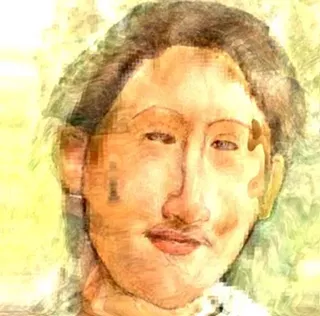And if we enacted some foolish no-imagination rule, we'd lack Dust Eaters, Julie Jensen's fine drama about four generations of Goshute Indians and their white Mormon neighbors.
Borderlands Theater is presenting the play in a marvelously acted production that maintains narrative and emotional coherence even though each scene brings a substantially different cast of characters.
The one constant through Act 1 is Albertine, a Goshute child raised, and eventually married into, a community of Mormon settlers. We meet her in the 1870s when she's a quiet but defiant 10-year-old being wrenched from the home of her widowed and impoverished Anglo foster mother. In the second scene, she's 20 years older, the fourth wife of the man who took her away earlier. We next meet her another 20 years down the line, in an encounter she has with one of her foster brothers, the only man around who even halfway understands what she's been up against, although what little he can do for Albertine is constricted by his wife's fear and his community's arrogance and racism. The act's final scene, set in the 1930s, finds the elderly Albertine taking charge of her newborn great-granddaughter, in the household of her foster brother's son.
Confused? It's clear enough along the way, and there's a little genealogy in the printed program to help you keep track of who's who. It's easier in the second act; Albertine has died, and now the story revolves around her great-granddaughter, Maud Moon, an emerging activist keenly aware of how her people have been abused through the decades, but also a young woman with an emotional attachment to the white Mormon household in which she grew up. She's more fond of the woman of the house, the good-hearted Lydia, than to the breadwinner, the bitter Enoch, whom we met at the end of the first act. There's a third character now in play, too: Bone, Maud Moon's older brother, a case study in contemporary Native American struggles against alcoholism and conflicted interests.
Only four actors take on all these roles; some are required mainly to bring new, subtle nuances to each scene, while others must undertake a wholesale change of personality every 15 minutes.
Leanné Whitewolf Charlton has the least Jekyll-and-Hyde work; in the first act, she portrays Albertine, and in the second, she's Maud Moon. Her characters age significantly through the course of each act, and Whitewolf Charlton manages this purely through performance, without the crutch of makeup and only the most necessary costume changes. Her Albertine begins as a strong-willed child, bound culturally to her Goshute people even though she appreciates the protection of her Anglo foster mother. Through her life, Albertine tells herself the traditional stories of her people, stories that parallel her own situation and offer her either hope or resignation.
Whitewolf Charlton, playwright Jensen and director Barclay Goldsmith create opposite trajectories for Albertine and Maud Moon. Albertine gradually turns inward, while scene by scene, Maud Moon opens herself out to the world, looking for a place for herself and her people in it. Whitewolf Charlton's work is all about gradual transformation, while Karole Spangler does a remarkable quick-change job as a new white woman in every scene of the first act. The greatest contrast is in the first two scenes: Initially, Spangler brings dignity to the role of a resentful Mormon pioneer woman, and then in the next scene, she's annoyingly chipper and condescending as that woman's sister. Spangler draws each character well, and if her later work as an immigrant bride isn't quite so convincingly lived, that's partly because Jensen has made that character incidental to the scene; Spangler obviously knows her later characters through and through.
Roberto Guajardo is equally versatile as the white men in the story--self-satisfied as one, well-meaning as another, increasingly damaged and angry as a third. Ernest David Tsosie III has only one character to deal with, and that's Bone. Tsosie walks a fine line between comic relief and pathos, and manages to stay on balance all the way.
"Dust Eaters" is what another tribe jokingly calls the Goshute people, because of their consumption of root vegetables. There's precious little left to them above ground on their reservation in the west desert of Utah, and what remains within them is always in danger of being sucked away, too. But daily life isn't much easier for the Mormon family trying to scrape by next door. Their only advantage is that their culture is in charge, but in the end, what good is that when the old-timers have died; the homestead is abandoned; and the relics of generations are packed into cardboard boxes?
Ultimately, the one thing the Goshutes and the Mormons have in common is a century-long subsistence on dust.








